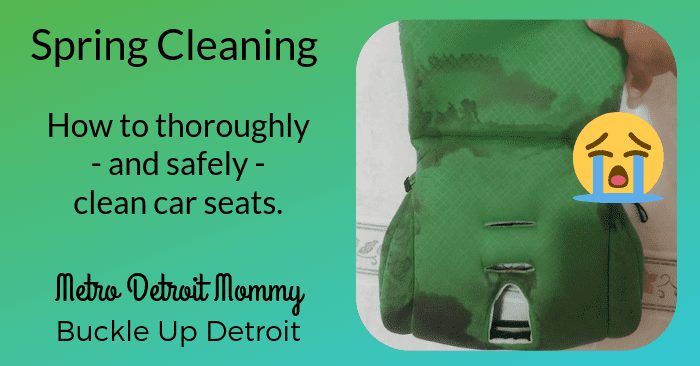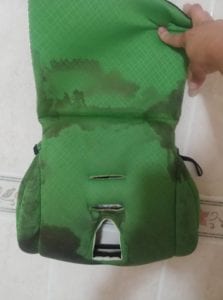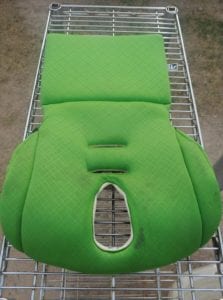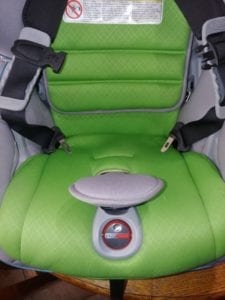
The weather is starting to break (please don’t hold me to that promise) and now is the time when lots of parents start taking a good hard look at the back seats of their cars, wondering how everything got this bad. Car seats tend to hoard things like road salt, mud, crackers, smoothies, spit-up, and worse… most have seen it all. But car seat manufacturers have rules on how to clean their products, and breaking those rules can invalidate the warranty, not to mention compromise your child’s safety. So how do you satisfy the urge to truly clean car seats while following the guidelines?
Rule number 1: Follow the manual!
- Your specific car seat will have instructions detailed in the manual on how to properly clean it, including how to remove its cover. Lost your manual? No problem! If you can’t find it on the manufacturer’s website some other sites, like manualslib, have plenty available to download. You can always call the company for instructions as well. Remember: If what you’re about to read here goes against the specifications in your manual, defer to the manual.
Rule number 2: Don’t Panic. Get A Towel.
- Generally, most car seat covers can be (at the very least) hand-washed in warm water and mild detergent. Mild detergents include original blue Dawn dish soap, simple bar soaps, and detergents without perfumes or dyes. A vigorous hand washing of a cover in the sink is usually enough to remove most typical messes (see photos below that were shared with me by a fellow CPST), but sometimes a little more is needed. In this case, an old soft-bristled toothbrush can work wonders. Some manufacturers, like Clek, sell specific cleaning products for their car seats. Though they’re not required they can be helpful. If the cover on your seat has special fabrics (like leather or Nanotex), this may be the case. Don’t try to remove the cover and wash it without detailed instructions or you may regret all of your life choices.
- Car seat VS Dr. Pepper
- After hand washing #1
- After hand washing #2
If the cover allows machine washing throw it in there with a towel to give it something to rub against in the cycle. I usually recommend hanging covers to dry to help ensure they don’t shrink but if you’re pressed for time and the manual allows it, put the cover in the dryer on low heat or tumble settings. Do not steam clean or use vinegar or bleach on your car seat cover or harness straps! It can deteriorate the fabrics and/or remove federally mandated flame retardants.
Car seats have crevices, and sometimes a good upside-down shake will get rid of a lot of loose objects. I can’t tell you how many matchbox cars I’ve rescued from beneath car seat covers. I like to employ q-tips and canned air to help get rid of crumbs in hard to reach spots. Hey, if I’m going to clean it it’s going to be done right.
Rule number 3: Be Stingy With The Water
- Speaking of harness straps, you should not immerse them in water and never, under any circumstance, put them in the washing machine. Doing so can warp the straps and cause them to lose tensile strength. This will absolutely compromise your child’s safety in a crash because the straps need to stretch a little bit to help provide protection to your child’s internal organs. Get a clean rag and wipe the straps down with gentle soap and a little bit of water. A wipe without alcohol or bleach in it, like baby wipes, can be used to remove residue but if an incident occurred that’s, let’s say, stinkier than normal you can set the entire seat (including the harness) in the sun for it to work its magic. You remember the sun, right? That’s the round bright thing that hangs out in the sky half the year. Well, it can act as an anti-bacterial agent without any ill effects. Plus it’s free. Win-win! If the buckle is gross, tip it upside down and swish the plastic mechanism in a glass of warm water to remove any gunk from the mechanism. Again: don’t submerge it completely because it has harness webbing attached. Make sure to only put the buckle itself in the water.
If all else fails it may be worth a check on the seat’s website to see if replacement harnesses or covers are available to purchase. When my son was younger he got Norovirus and vomited repeatedly in his Diono. Everything was soaked and I didn’t have the mental capacity to clean it while dealing with a terribly ill toddler, so one panicked call to customer service and $25 later I was the proud owner of a completely new set of harness straps and seat padding. Completely worth it, let me tell you. But! Not all car seats have removable harnesses. I got lucky. More and more manufacturers are making seats with covered backs and non-replaceable harnesses. My hope for you is that you never need to replace a harness.
I’ve heard of seats sitting in basements and garages that collected mold, rat feces, random smells, and who knows what else. If that happens to you, godspeed and I wish for you a quick resolution with customer service.
Dana is the lucky mother to two incredible kids (aged 10 & 6) and the happy wife of Nate. She stumbled around in her adult life for a while before finally realizing that she could get paid to pursue her passion: keeping kids safe. In 2013 she started working at Modern Natural Baby in Ferndale where she eventually became a Child Passenger Safety Technician with additional Special Needs training. Dana also runs the child passenger safety-focused Facebook page Buckle Up Detroit and works with the amazing lady bosses at Metro Detroit Doula Services offering car seat classes, consultations, and more!











